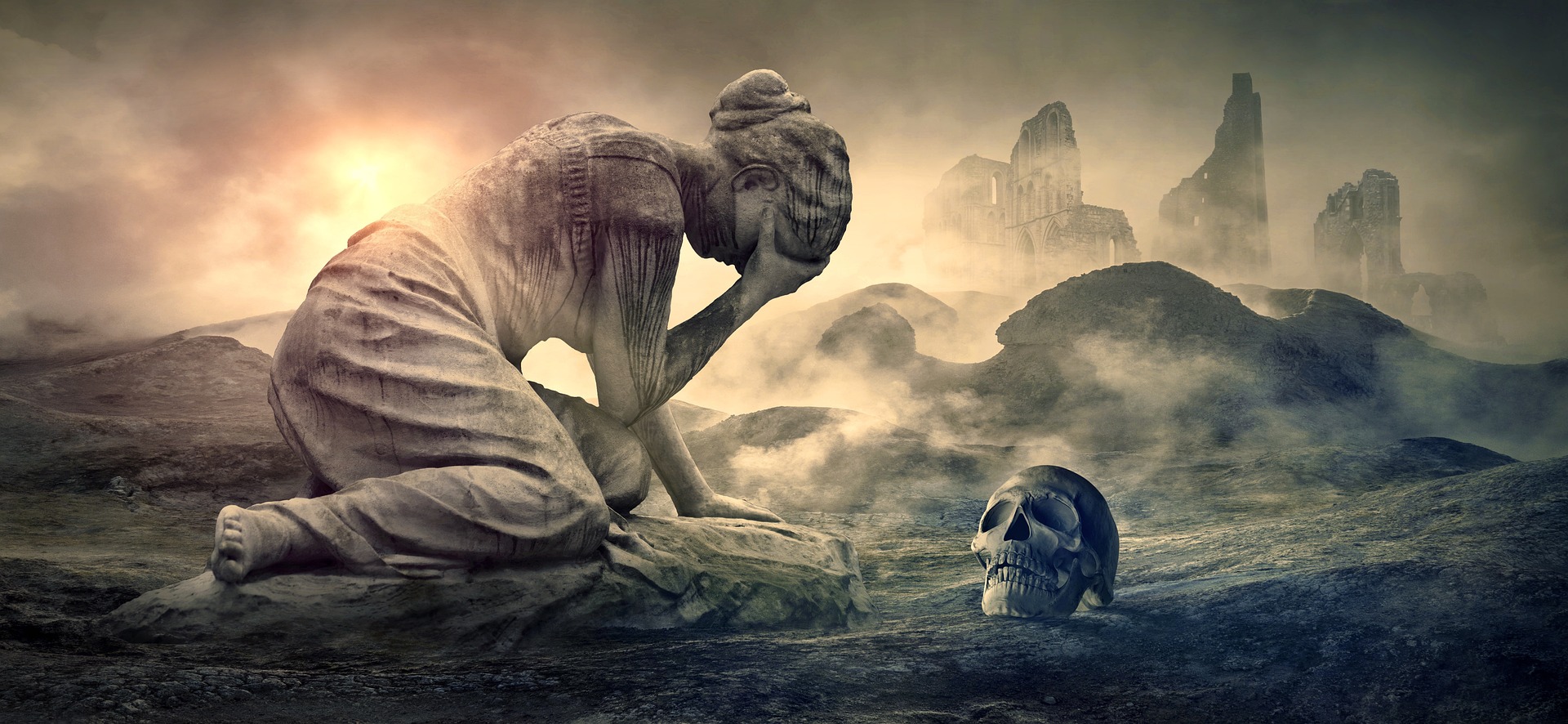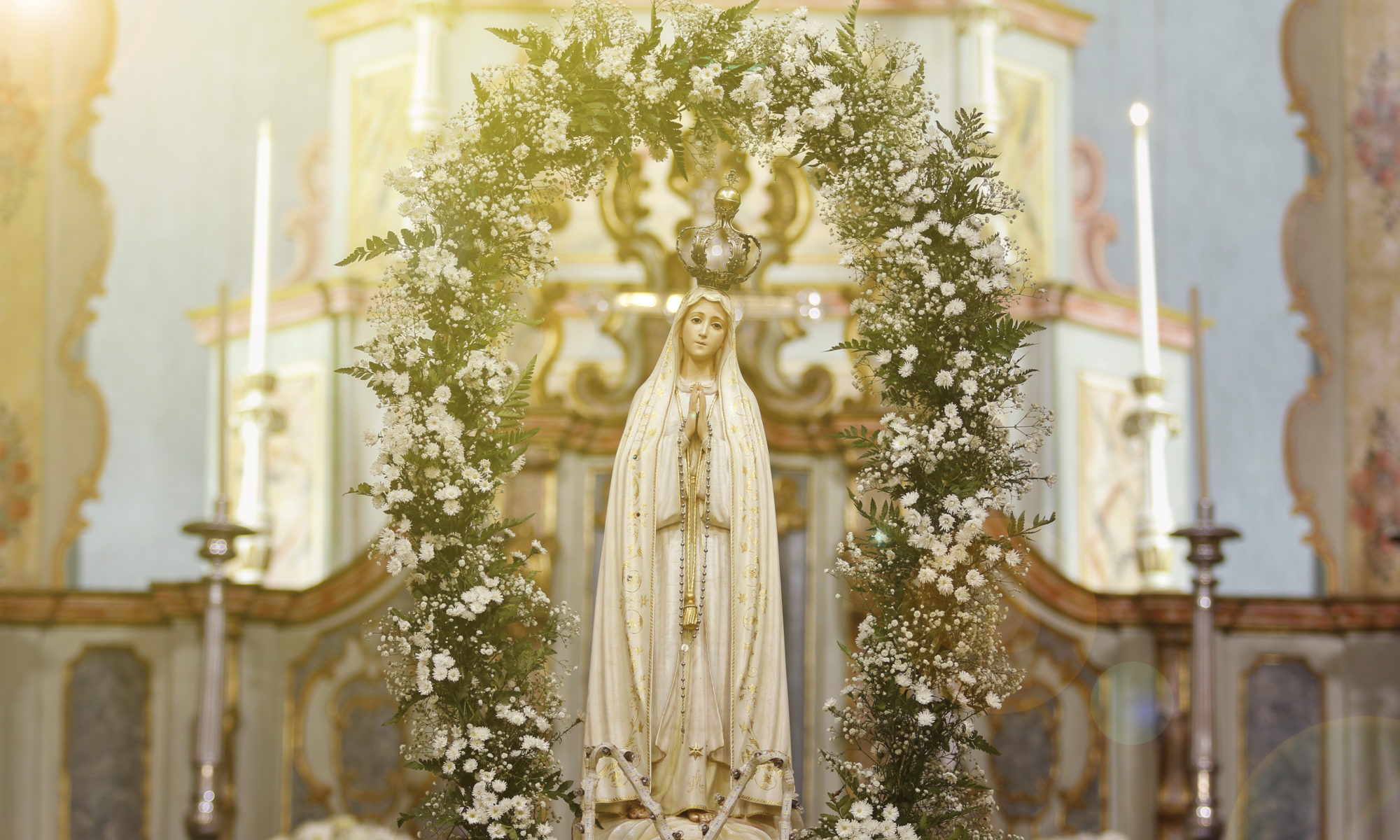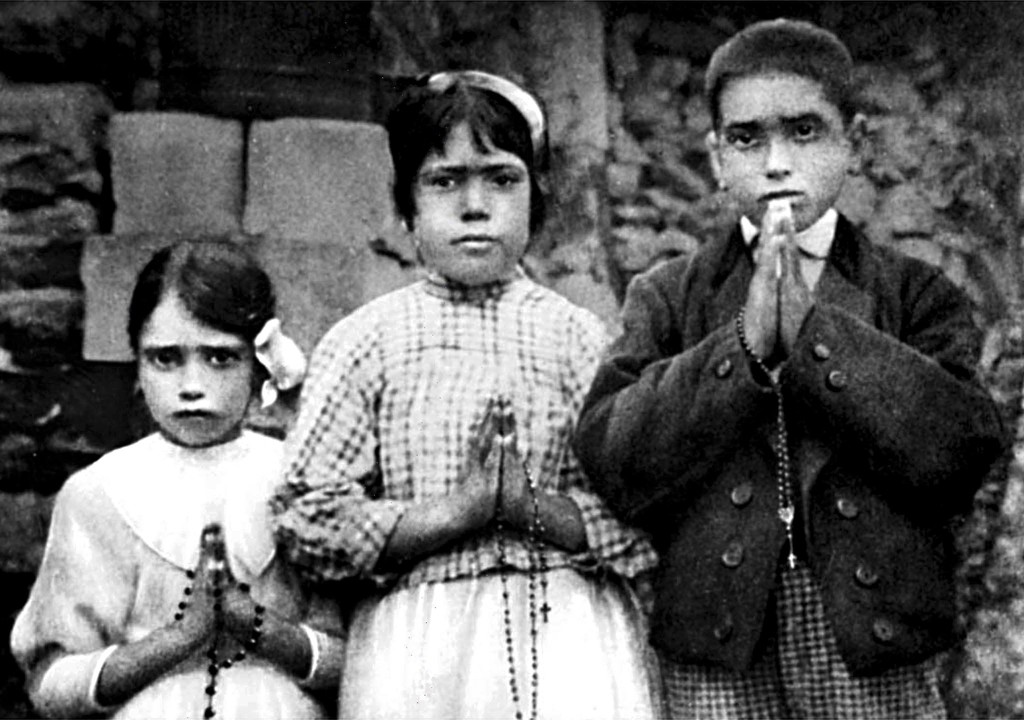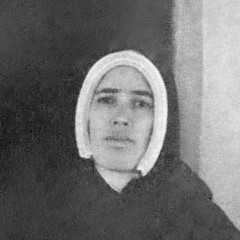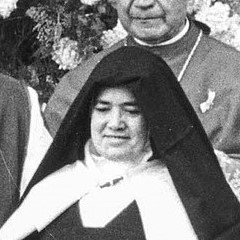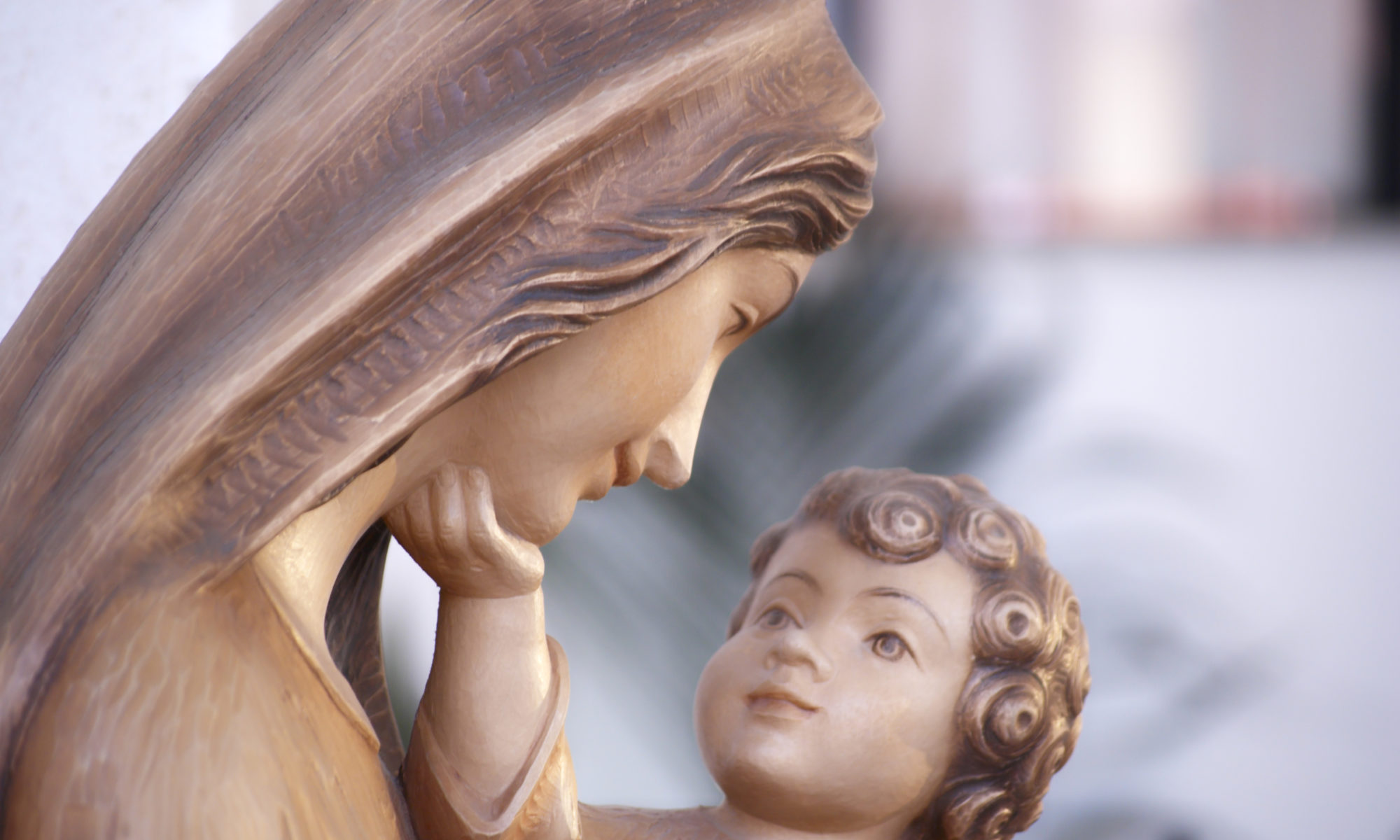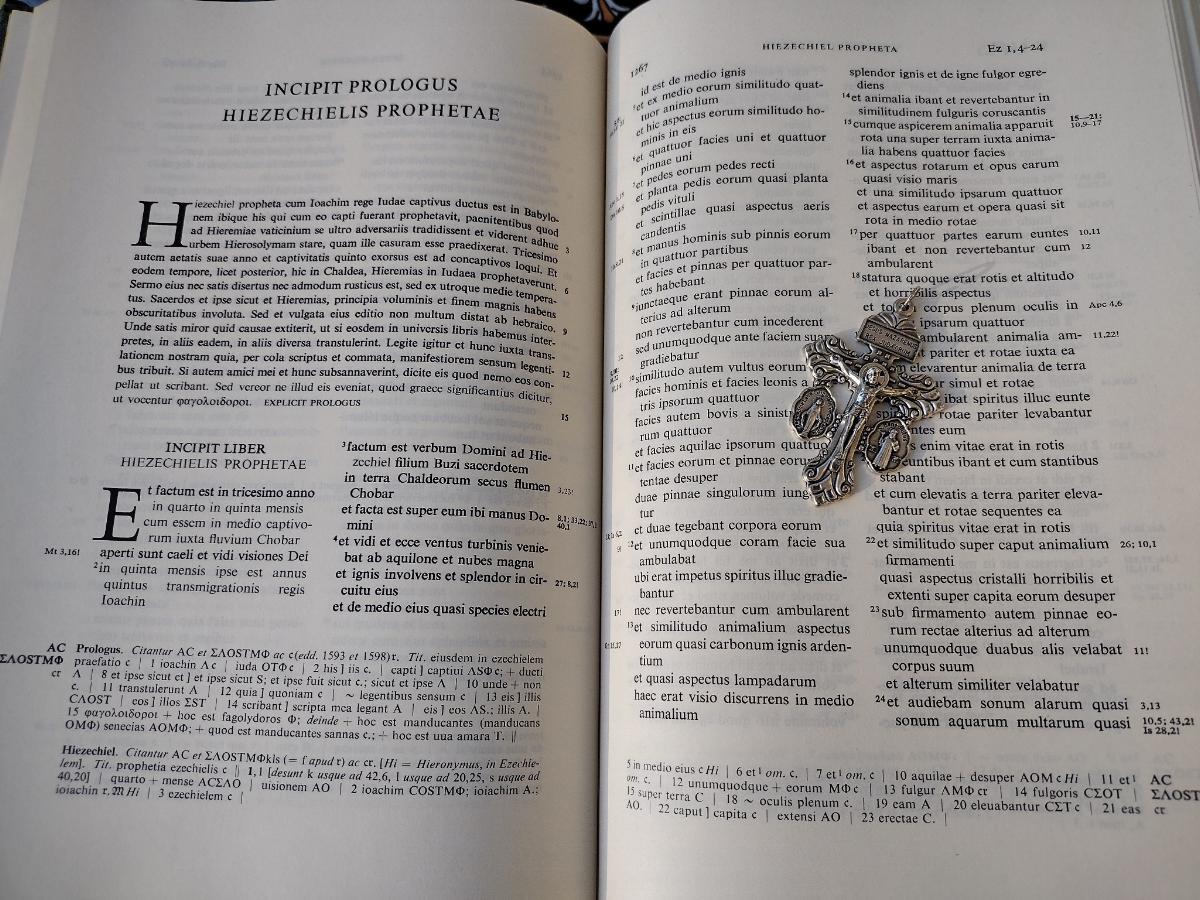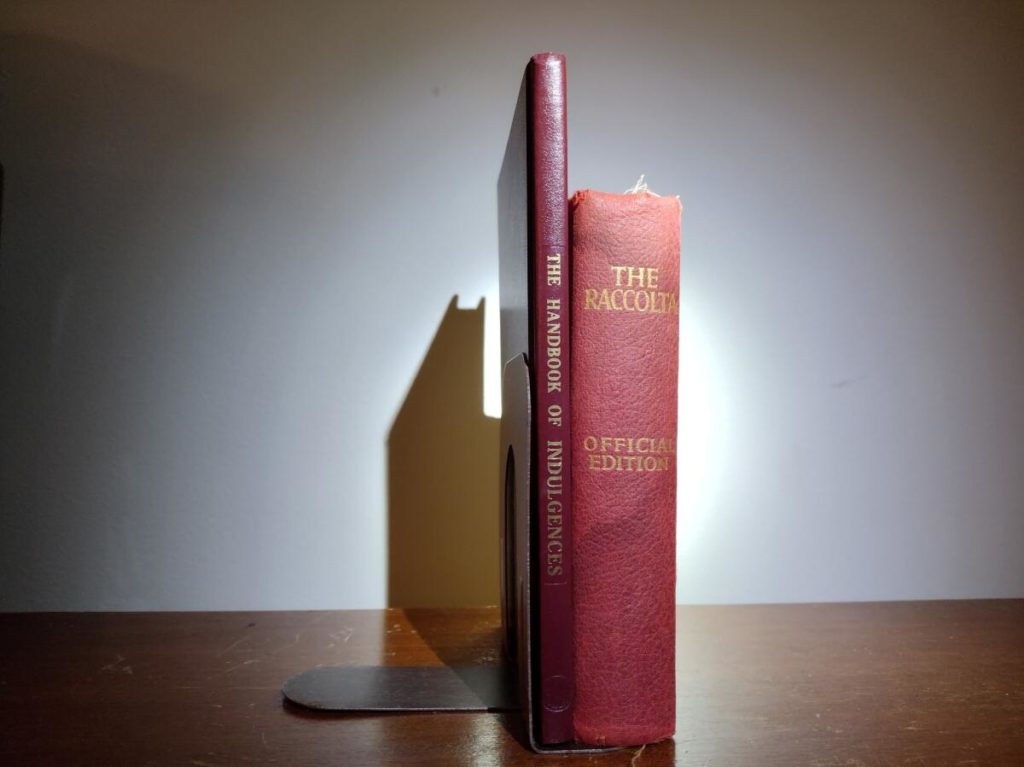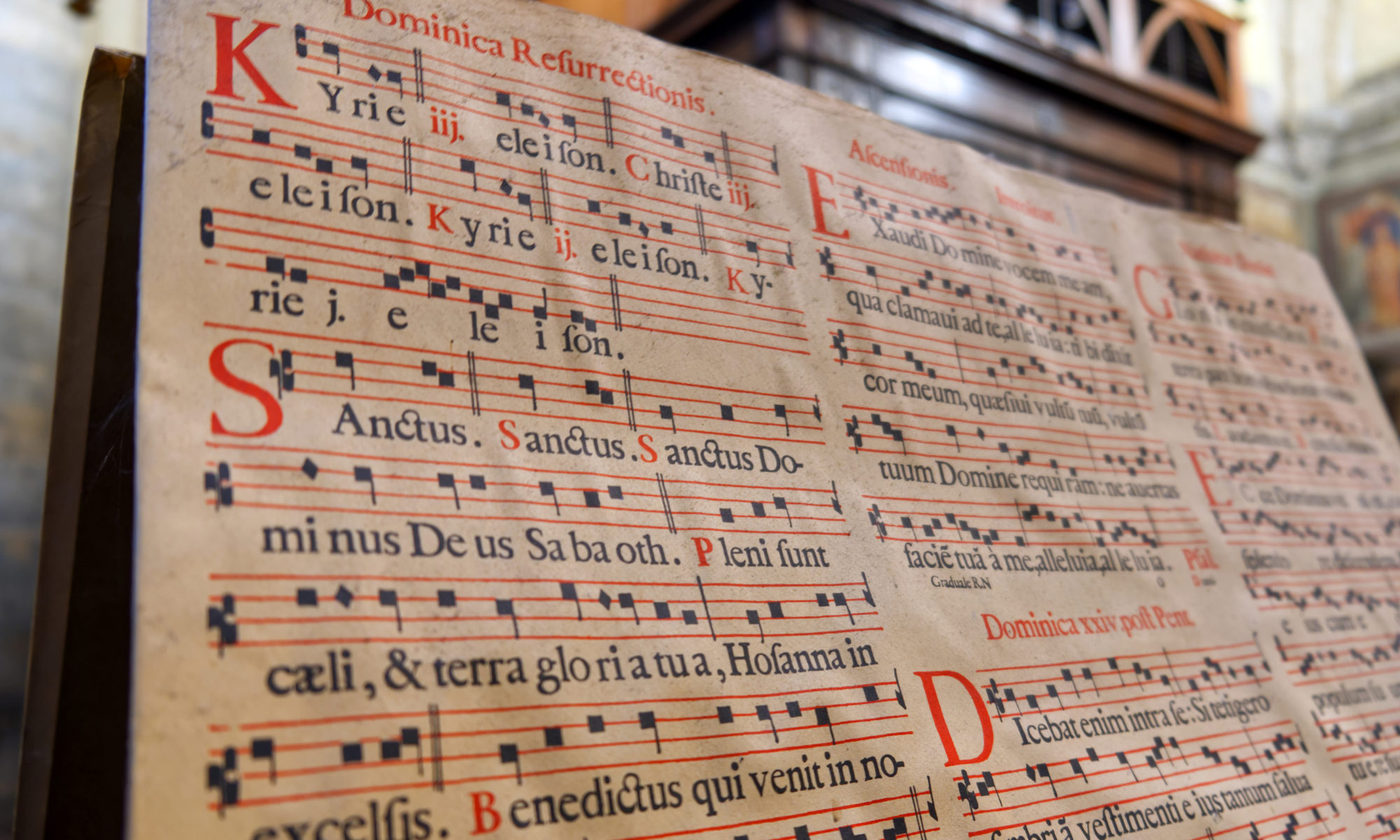Our Lady of Fatima appeared to the shepherd children six times, and Her message to Lucia included what are known as the “Three Secrets.” Fr. Andrew Apostoli, C.F.R., points out, in Fatima for Today, that the secrets revealed in the July and October apparitions are of particular importance (Fatima for Today, p. 53).
The First Secret – the vision of Hell (that Hell is real).
When this secret was revealed to the three children, they had a vision of hell.
”Our Lady showed us a vision of a sea of fire in which human souls were screaming in agony and despair. The transparent, humanoid souls were forever trapped in the bowels of the earth with hideous demons in bizarre, never-before-seen animal forms.” (summarized from Wikiwand)
The Bible tells us that hell is real. There are several places in the Bible that describe hell, the place where those who disobey God go if they do not repent.
For example, The Revelation to John speaks of the souls of the dead who will be cast into hellfire:
“This is the second death, the lake of fire; and if any one’s name was not found written in the book of life, he was thrown into the lake of fire” (Revelation 20:14–15).
In Mark 9:47–48, our Lord refers to
“…hell, where their worm does not die, and the fire is not quenched.”
In this case, our Lord is quoting Isaiah 66:24, which gives the same description but does not state clearly that it refers to hell. So, the verse in the Gospel of Mark makes clear what is only implied in the Book of Isaiah. Judith 16:17 and Ecclesiasticus 7:17 also describe the punishment of the wicked as “fire and worms.”
Our Lord warns against being trapped in hell for eternity:
“Then [at the Last Judgment] he [the Son of man] will say to those at his left hand, ‘Depart from me, you cursed, into the eternal fire prepared for the devil and his angels; ….’ And they will go away into eternal punishment, but the righteous into eternal life” (Matthew 25:41–46).
After the children, especially Francisco and Jacinta, saw this vision of hell, they began to suffer often for the salvation of sinners. Jacinta appeals to those who try to follow fads, saying that once a person understands the meaning of eternity, he will do anything to change his way of life, and that a church that follows the eternal Lord has nothing to do with fads.
St. Faustina saw a similar vision of hell
Saint Faustina (1905–1938), a Polish visionary, also had a vision of hell, shown to her by God, to prove to her that hell was real. The horrific vision that she described is similar to the one seen by the Fatima children. She describes the hellfire she saw in her vision as an eternal spiritual fire that causes terrible suffering. In addition, she describes seeing human sinners trapped in eternal torment with the devil, in darkness, with a terrible, suffocating stench.
Perhaps many people think that only those who have committed terrible sins will go to hell. In fact, it is not so simple. St. Faustina tells us that many souls who have fallen into hell were people who did not believe in hell. If one does not believe in the existence of hell, there is a greater risk that one will sin against God and die without repentance.
“Do you not know that the unrighteous will not inherit the kingdom of God? Do not be deceived; neither the immoral, nor idolaters, nor adulterers, nor homosexuals, nor thieves, nor the greedy, nor drunkards, nor revilers, nor robbers will inherit the kingdom of God” (I Corinthians 6:9–10).
Those who cannot inherit the Kingdom of God, that is, those who do not fully realize that they have sinned, or do nothing when they do realize it, have a greater chance of going to hell. I have sometimes wondered whether or not to go to confession, but after confession I have often realized that, in fact, I had just become desensitized to sin.
As Our Lady of Fatima emphasized, repentance, turning to God and asking his forgiveness, and being reconciled with God—these are the things that will lead the soul to salvation. This fact, and our Lady’s grave warning of the reality of hell, should be taken seriously. This is because we human beings are creatures who continue to sin, and hell is the destination of those who die in a state of sin.
The Second Secret – About the Most Important Events and Movements Shaping Modern Society
The Second Secret is divided into two parts.
Our Lady wants to establish devotion to her Immaculate Heart in order to save souls and bring peace. She is asks for the consecration of Russia to her Immaculate Heart, and for the devotion of the Five First Saturdays, in order to prevent war, famine, and persecution of the Church. If the requests are heeded, Russia will be converted, and peace will be granted. (summarized from Wikiwand)
Part 1
Request: Devotion and Prayer to our Lady of the Immaculate Conception.
Prophecy: The end of the First World War.
Warning and Prophecy: If sinners are not sufficiently converted, another world war will occur, beginning in the reign of Pope Pius XI.
Part 2: Consecration of Russian, and Devotion to the Immaculate Heart of Mary
Request: Devotion to Our Lady of Fatima on First Saturdays.
Prophecy: Famine in many places.
Warning and Prophecy: If the Pope, in union with all the bishops, consecrates Russia to the Immaculate Heart of Mary, there will be peace in the world. If not, the errors of Russia will spread throughout the world, leading to persecution of the Catholic Church.
Our Lady’s prophecy regarding Part 1 of the Second Secret has already been fulfilled, since that was a prophecy about World War II. But the prophecy in Part 2 seems to foreshadow further wars, which may well be in the future.
July 13th: The third secret that was sealed
Sister Lucia had been warned by the Virgin Mary not to reveal the third secret to anyone until the time was right. Told by Bishop Silva to leave the third secret in writing, Lucia wondered what to do.
Then, in January 1944, the Virgin Mary appeared to her.
She said to Lucia, “Do not write down the meaning of the secret as you understand it. Just describe the secret as you see it.”
Lucia obeyed Our Lady’s words, wrote down the third secret, and gave the sealed letter to Bishop Silva. At that time, Lucia asked Bishop Silva to disclose the third secret after Lucia’s death, or at the latest in 1960.
In 1957, Bishop Silva delivered the letter, still under seal, to Rome. However, by 1960, the third secret was still not disclosed.
In 2000, the Vatican finally made the third secret public. It is said that the reason it was not made public until 2000 was because it prophesied the assassination of the Pope.
The Third Secret: The Murdered Pope.
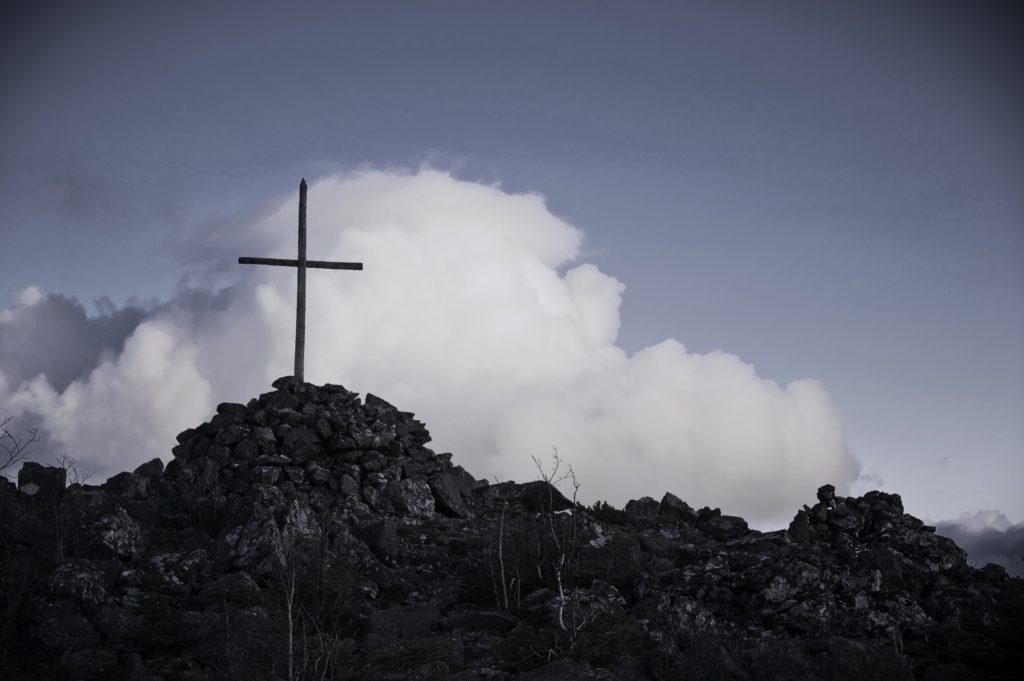
The vision in the third secret was as follows:
To the left of the Virgin, and slightly above her, flew an angel with a flaming sword in his left hand, crying out, “Penance, penance, penance!” in a loud voice.
In the vision, several bishops, priests, monks, and nuns, along with a bishop dressed in white (probably the Pope), are climbing a steep mountain path with a crude cross at the top. The bishop dressed in white was praying for the dead in anguish and grief, as he passed a large, ruined town with trembling steps.
Arriving at the top of the mountain, the bishop knelt and prayed before the cross, only to be killed by several soldiers. Bishops, priests, monks, nuns, and laymen of various ranks and occupations were also killed and died there one by one. Beneath the two arms of the Cross were two Angels, each with a crystal aspersorium in his hand, who gathered up the blood of the Martyrs and sprinkled the souls that were making their way to God (Summarized from Wikiwand).
The Pope in this vision is thought by some to represent John Paul II, who was nearly assassinated on May 13 (the feast of Our Lady of Fatima) in 1981. On the other hand, Pope St. John Paul II survived his attempted assassination, whereas the bishop in the vision did not survive. It seems more likely that the bishop depicted in the Third Secret is not a specific individual, but rather a symbolic figure.
Many people believe that there are parts of the Third Secret that have not been made public. Also, whereas the first and second secrets each contain both a vision and verbal commentary by our Lady, the third secret (as published by the Vatican) contains only a vision, and no commentary.
After commenting on the visions of the first and second secrets, why would our Lady have offered no commentary on this difficult-to-understand third vision? And, if the third secret was only a vision (perhaps showing the assassination of a pope), why was it kept secret, even after 1960?
Actually, there is some evidence that Sister Lucia recorded the Third Secret in two separate documents. (For more information, see Chapter 13 of the book The Devil’s Final Battle, by Fr. Paul Kramer.) The more one learns about the third secret, the more doubtful it appears that the Vatican has given us the whole story.
Oct 13th: The Miracle of the Sun.
For the first time in recorded history, a prophet or seer was asking all the people to assemble at a certain place and time to witness a public miracle to prove that the message which had been received came from God. (Fatima: The Great Sign by Francis Johnston)
On October 13, believers and non-believers alike gathered in Fatima and Cova de Iria to witness the miracle of Our Lady. Roughly 40,000 to 80,000 people gathered. (The exact number is unknown.) The rain that had been falling since the day before had soaked the people, and the ground was muddy and slushy.
Lucia, who was waiting for the apparition of the Virgin Mary and praying in front of the small tree where she had appeared, suddenly felt an urge welling up inside her, and asked the people gathered to pray the rosary. As the people began to pray the rosary, the Virgin Mary appeared to the three children. When Lucia asked Our Lady what she wanted her to do, she said, “I am Our Lady of the Rosary. Please build a church here. Pray the rosary every day. Soon the war will be over, and the soldiers will come home.”
She also told Lucia, when asked about the healing of those gathered, “Some will be healed, some will not. People need to repent and change their way of life.” Our Lady also warned them not to anger God any further.
After delivering these messages, the Virgin Mary opened her hands to reflect the light of the sun and ascended into heaven. Lucia then shouted to the crowd, “Look at the sun!” At that moment, the clouds opened, the rain stopped, and the crowd saw the sun miraculously spinning, zigzagging, and plummeting toward them (Fatima for Today, p. 114). Even stranger, eyewitnesses testified that, although the sun shone brightly, it did not hurt the eyes of those who were watching it. (Fatima for Today, p. 113)
Natural science professor testifies to miracle
Dr. Gonzalo de Almeida Garrett, a professor of natural sciences at the University of Coimbra, was also there to witness the miracle of the sun. In this miracle, a multicolored light was seen by some, but not by others. Dr. Garrett testified to the fact that when the miracle occurred, the surroundings were tinted with an amethyst color.
The sun shone clearly and strongly, like a glowing disk, its edges were cleanly cut and did not hurt the eyes. On the other hand, I disagree with the comparison of the sun to a dull silver disk. The atmosphere was amethyst-colored due to a solar phenomenon, and the sky, the atmosphere, and everything around us was amethyst-colored. I feared that I had a retinal anomaly, but in that case I should not have been able to see purple. (Summarized from Aleteia)
However, what the three children saw was not the dancing sun, but visions of the Virgin Mary, St. Joseph, the mysteries of the Rosary, and Our Lady of Mount Carmel. After all the miracles were over, the people’s clothes, and even the ground, were completely dry.
I believe that this miracle of the sun took place for the sake of those who could not turn without experiencing a miracle of God.
When will the third secret be fulfilled?
Father Nicholas Gruner (1942-2015) was one of those who believed that the third secret has not been completely revealed.
In 1931, our Lord appeared to Sister Lucia. He again warned her that great misfortune would befall the world if the consecration of Russia were not carried out.
In this video, Fr. Gruner uses the prophecy of St. Margaret Mary Alacoque to explain what the possible timing of God’s judgment might be, if the consecration of Russia is not accomplished.
On June 17, 1689, the Blessed Virgin Mary appeared to Margaret. Margaret then explained to the King of France that our Lady had asked her to tell him to please consecrate the nation of France to the Sacred Heart of Jesus. However, three generations of French kings continued to ignore the words of the Virgin Mary. Then, on June 17, 1789, exactly 100 years after the prophecy, the King of France was deprived of his royal prerogatives by the Third Estate. Less than four years later, he was executed by guillotine.
Father Gruner expressed his concern that the “time limit” of the Fatima request might also be 100 years, counting from 1931.
Benedict XVI: Pray for the triumph of the Immaculate Heart of Mary
On May 13, 2010, on the occasion of the 10th anniversary of the beatification of Blessed Jacinta and Francisco Marto (and seven years before the 100th anniversary of the Fatima apparitions), Pope Benedict XVI gave a homily regarding the secrets of Jacinta, Francisco, and our Lady of Fatima. In this homily, the Pope made it clear that it would be a mistake to think that the prophetic mission of Fatima is complete.
He also introduced the words of Jacinta and Francisco with regard to their burning love for God. He emphasized the importance of faith, quoting the words of our Lord in Luke 11:28: “Blessed rather are those who hear the word of God and keep it!” He added that faith does not fail us, that it opens the horizon of hope, and that it is the foundation for a life without fear. Moreover, he expressed his hope that devotion to Our Lady of Fatima would spread throughout the world, and would hasten the fulfillment of the prophecy that the Immaculate Heart of Mary will triumph. (EWTN, Homily, Mass in Fatima 13 May 2010)
It has already been 19 years since Benedict XVI prayed that the prophecy of the triumph of the Immaculate Heart of Mary would soon be fulfilled, but that silver lining is still not in sight. Given the state of the world today, it seems more likely that the horrors of World War III will come to pass first. On the other hand, Luke 21:9 says, “When you hear of wars and tumults, do not be terrified; for this must first take place, but the end will not be at once.” Hope remains, it seems.
Consecration not performed as requested by Our Lady of Fatima
The two conditions for avoiding the war prophesied by Our Lady are: first, the Five First Saturdays devotion as an atonement for the people’s blasphemy and insults to Our Lady, and second, the consecration of Russia, which only the Pope can do.
In the more than 100 years since the apparitions of the Blessed Virgin Mary, prayers have been offered several times by successive Popes for the conversion and consecration of Russia. Unfortunately, none of the attempts at the Consecration of Russia have been carried out as Our Lady requested.
As the March 21, 2022 edition of LifeSite News explained:
The world’s bishops were invited, but not commanded, to join in the consecration.
It could also be said that the Five First Saturdays devotion, available to all the faithful, is not yet sufficiently popular or widespread. At any rate, the Fatima prophecy tells us that if the Consecration of Russia is not carried out, many nations will disappear from the earth.
I sincerely pray that the prophecy of the triumph of the Immaculate Heart of Mary will speedily be fulfilled, and that the world will be at peace.

